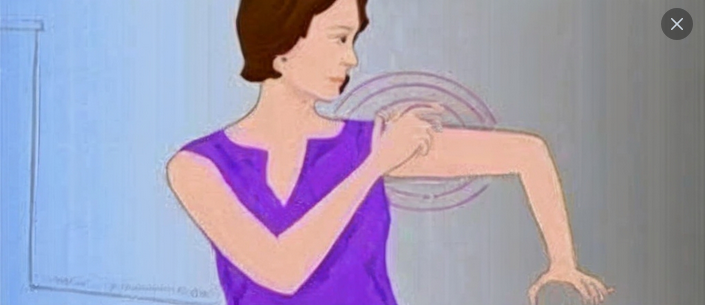Stroke Warning Signs to Watch for: Recognize Symptoms Early and Take Action
A stroke can strike suddenly, with devastating consequences, but early detection can save lives. Recognizing the warning signs of a stroke could make all the difference between recovery and long-term disability. This article explains the key types of strokes, critical symptoms to watch for, and what to do if you or someone you know experiences them.
Understanding Stroke: Types and Causes
1. Ischemic Stroke (Reduced Blood Flow)
- Most Common: Represents 85% of strokes.
- Cause: A blood clot or cholesterol buildup blocks an artery supplying the brain, leading to reduced oxygen flow. This condition, called cerebral thrombosis, can quickly damage brain cells.
2. Hemorrhagic Stroke (Bleeding in the Brain)
- Less Common: Only 15% of strokes are hemorrhagic.
- Cause: A burst aneurysm or underlying issues like high blood pressure, tumors, or other blood vessel abnormalities cause brain bleeds.
3. Transient Ischemic Attack (TIA) (Mini-Stroke)
- Temporary Blockage: Blood flow to the brain is blocked briefly and restores on its own.
- Duration: Symptoms last for a short period but resolve quickly, often within minutes.
- Warning Sign: TIAs are a red flag for future strokes. Immediate medical care is essential, as even a mini-stroke increases the risk of a full stroke.
Top Symptoms: Signs You May Be Having a Stroke
1. Numbness or Weakness on One Side
- Key Areas Affected: Face, arms, or legs.
- Indicator: One side of the body may feel numb, or your smile could droop on one side.
- What to Do: If you notice sudden weakness or paralysis in a limb, seek emergency care immediately.
2. Dizziness or Loss of Balance
- Feeling Faint: Sudden dizziness, confusion, or feeling off-balance could indicate a stroke.
- When to Worry: If you experience a spinning sensation or struggle to stand, call for medical assistance.
- Pro Tip: Dizziness might seem harmless but can be a serious warning of brain function disruption.
3. Vision Problems
- Warning Signs: Blurred vision, sudden loss of vision in one or both eyes, or difficulty seeing colors.
- Take Action: These changes can occur quickly before a stroke, requiring immediate medical intervention.
4. Severe Headache
- Description: A sudden, intense headache that might cause nausea or vomiting.
- Why It Matters: While headaches are common, stroke-related headaches often appear out of nowhere and are extremely severe. If this happens, don’t ignore it—get emergency help.
5. Speech Difficulty or Confusion
- What to Look For: Slurred speech, trouble finding the right words, or difficulty understanding others.
- What This Means: If you or someone else struggles to speak clearly, it could signal brain damage—call for help right away.
6. Shortness of Breath
- Sudden Symptom: Unexplained difficulty breathing, especially if it occurs while at rest.
- What to Do: If breathing problems are accompanied by other symptoms like chest pain or dizziness, seek medical care immediately. This could indicate a stroke or another severe condition.
Act FAST: How to Respond During a Stroke Emergency
The FAST method is a simple way to remember what to do if you suspect a stroke:
- F – Face: Ask the person to smile. Does one side droop?
- A – Arms: Ask the person to raise both arms. Is one arm weak or numb?
- S – Speech: Ask the person to say a simple sentence. Is their speech slurred or hard to understand?
- T – Time: If any of these symptoms are present, call emergency services immediately.
Preventive Steps: Reducing Your Stroke Risk
- Manage Blood Pressure: High blood pressure is a leading cause of strokes. Monitor it regularly and follow a healthy lifestyle to keep it under control.
- Control Cholesterol Levels: High cholesterol can clog arteries, increasing stroke risk. Eat heart-healthy foods and get regular checkups.
- Exercise Regularly: Physical activity improves blood circulation and helps maintain a healthy weight.
- Eat a Balanced Diet: Consume fruits, vegetables, lean protein, and healthy fats. Limit processed foods and sugar to prevent high blood pressure and obesity.
- Avoid Smoking and Limit Alcohol: Both increase your risk of stroke. Quitting smoking and reducing alcohol consumption are essential preventive measures.
- Stay Aware of Your Heart Health: Conditions like atrial fibrillation increase the likelihood of stroke. Regular heart screenings are critical.
When to Seek Immediate Medical Help
If you experience any stroke symptoms—even if they subside—do not ignore them. A TIA or mild stroke can often precede a major stroke. Seeking medical attention quickly ensures that you receive appropriate treatment, which can prevent long-term complications.
Final Thoughts: Protect Your Brain and Your Health
Recognizing the early signs of a stroke could save a life. While fast action is crucial, maintaining a healthy lifestyle also plays a significant role in reducing the risk of stroke. Regular health checkups, managing chronic conditions, and adopting healthy habits—like exercise and a balanced diet—are all essential components of stroke prevention.
Your health is your most valuable asset, and taking steps now to safeguard it will yield lifelong benefits. Stay informed, act quickly if symptoms appear, and encourage those around you to prioritize their well-being.
